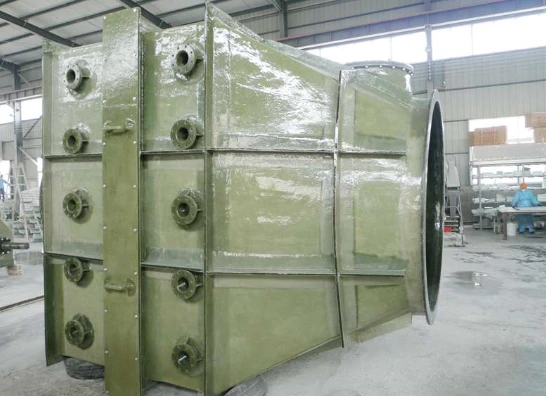
-
 Afrikaans
Afrikaans -
 Albanian
Albanian -
 Amharic
Amharic -
 Arabic
Arabic -
 Armenian
Armenian -
 Azerbaijani
Azerbaijani -
 Basque
Basque -
 Belarusian
Belarusian -
 Bengali
Bengali -
 Bosnian
Bosnian -
 Bulgarian
Bulgarian -
 Catalan
Catalan -
 Cebuano
Cebuano -
 China
China -
 China (Taiwan)
China (Taiwan) -
 Corsican
Corsican -
 Croatian
Croatian -
 Czech
Czech -
 Danish
Danish -
 Dutch
Dutch -
 English
English -
 Esperanto
Esperanto -
 Estonian
Estonian -
 Finnish
Finnish -
 French
French -
 Frisian
Frisian -
 Galician
Galician -
 Georgian
Georgian -
 German
German -
 Greek
Greek -
 Gujarati
Gujarati -
 Haitian Creole
Haitian Creole -
 hausa
hausa -
 hawaiian
hawaiian -
 Hebrew
Hebrew -
 Hindi
Hindi -
 Miao
Miao -
 Hungarian
Hungarian -
 Icelandic
Icelandic -
 igbo
igbo -
 Indonesian
Indonesian -
 irish
irish -
 Italian
Italian -
 Japanese
Japanese -
 Javanese
Javanese -
 Kannada
Kannada -
 kazakh
kazakh -
 Khmer
Khmer -
 Rwandese
Rwandese -
 Korean
Korean -
 Kurdish
Kurdish -
 Kyrgyz
Kyrgyz -
 Lao
Lao -
 Latin
Latin -
 Latvian
Latvian -
 Lithuanian
Lithuanian -
 Luxembourgish
Luxembourgish -
 Macedonian
Macedonian -
 Malgashi
Malgashi -
 Malay
Malay -
 Malayalam
Malayalam -
 Maltese
Maltese -
 Maori
Maori -
 Marathi
Marathi -
 Mongolian
Mongolian -
 Myanmar
Myanmar -
 Nepali
Nepali -
 Norwegian
Norwegian -
 Norwegian
Norwegian -
 Occitan
Occitan -
 Pashto
Pashto -
 Persian
Persian -
 Polish
Polish -
 Portuguese
Portuguese -
 Punjabi
Punjabi -
 Romanian
Romanian -
 Russian
Russian -
 Samoan
Samoan -
 Scottish Gaelic
Scottish Gaelic -
 Serbian
Serbian -
 Sesotho
Sesotho -
 Shona
Shona -
 Sindhi
Sindhi -
 Sinhala
Sinhala -
 Slovak
Slovak -
 Slovenian
Slovenian -
 Somali
Somali -
 Spanish
Spanish -
 Sundanese
Sundanese -
 Swahili
Swahili -
 Swedish
Swedish -
 Tagalog
Tagalog -
 Tajik
Tajik -
 Tamil
Tamil -
 Tatar
Tatar -
 Telugu
Telugu -
 Thai
Thai -
 Turkish
Turkish -
 Turkmen
Turkmen -
 Ukrainian
Ukrainian -
 Urdu
Urdu -
 Uighur
Uighur -
 Uzbek
Uzbek -
 Vietnamese
Vietnamese -
 Welsh
Welsh -
 Bantu
Bantu -
 Yiddish
Yiddish -
 Yoruba
Yoruba -
 Zulu
Zulu
fiberglass chemical product
The Versatile World of Fiberglass Chemical Products
Fiberglass, a composite material made from fibers of glass, is prominent in various industries due to its unique properties. As a critical component in construction, automotive, aerospace, and numerous other sectors, fiberglass has revolutionized how we think about manufacturing and material science. This article delves into the chemical products associated with fiberglass, exploring their properties, applications, and benefits.
At its core, fiberglass consists of glass fibers that are bound together using a polymer resin. This combination gives fiberglass its remarkable strength and lightweight properties, making it an ideal choice for structural applications where weight savings are essential. The two primary types of resin used in fiberglass manufacturing are epoxy and polyester. Each has distinct advantages based on the intended application.
Epoxy resin is known for its superior adhesive properties and chemical resistance. It is commonly used in applications requiring high performance, such as aerospace components, marine craft, and high-end automotive parts. The chemical structure of epoxy allows it to form strong bonds with glass fibers, enhancing the overall durability of the composite. Moreover, its resistance to environmental factors makes it a preferred choice in conditions where exposure to moisture and harsh chemicals is anticipated.
On the other hand, polyester resin is more cost-effective and easier to work with. This makes it the go-to option for a wide range of applications, from consumer goods to construction materials. While it doesn’t offer the same level of performance as epoxy, polyester resin does provide satisfactory results in less demanding environments. The popularity of polyester resin in the production of fiberglass is further bolstered by its ease of use and faster curing time, which can significantly enhance productivity on manufacturing floors.
In addition to resins, various additives and chemicals play crucial roles in the performance of fiberglass products. Fillers, for example, are often incorporated to improve mechanical properties or reduce production costs. Common fillers include talc, calcium carbonate, and silica. These materials can enhance the stiffness, strength, and impact resistance of fiberglass, making it suitable for applications requiring robust performance.
fiberglass chemical product

Furthermore, pigments and colorants are added to fiberglass products to improve aesthetics and meet specific customer requirements. Whether ensuring a marine hull stands out in vibrant colors or giving architectural elements a sleek finish, these additives are essential to achieving the desired look and feel.
One of the most significant advantages of fiberglass is its durability. Unlike traditional materials like wood or metal, fiberglass does not corrode or rot, making it ideal for outdoor applications. Its resistance to water, chemicals, and UV light also extends its lifespan, reducing maintenance costs over time. This durability is especially beneficial in industries such as construction, where long-lasting materials can significantly impact overall project costs and timelines.
Another key benefit of fiberglass is its insulation properties. Fiberglass composites can provide excellent thermal and electrical insulation, which is crucial for various applications, including electrical components and industrial products. The lightweight nature of fiberglass also contributes to energy savings during transportation, assembly, and installation, further enhancing its appeal in a world increasingly focused on sustainability.
As industries evolve, the applications of fiberglass chemical products are expanding. Innovations in manufacturing processes and resin formulations are leading to the development of specialized products that cater to specific needs. For instance, the introduction of bio-based resins is paving the way for more environmentally friendly fiberglass solutions. These new materials maintain the performance characteristics of traditional resins while reducing reliance on fossil fuels and minimizing carbon footprints.
In conclusion, fiberglass chemical products represent a versatile and essential element in modern manufacturing. Their unique properties, such as strength, durability, and resistance to environmental factors, make them indispensable across various industries. As advancements in chemical formulations continue, the future of fiberglass appears bright, promising even wider applications and increased sustainability. Whether in the automotive industry, construction, or consumer goods, fiberglass remains a cornerstone of innovation, demonstrating how chemistry can transform materials and impact the world around us.









